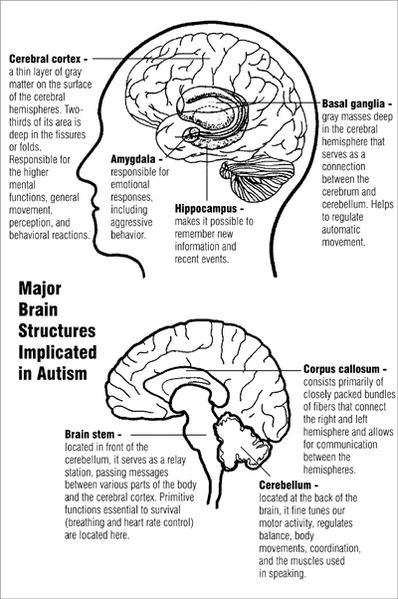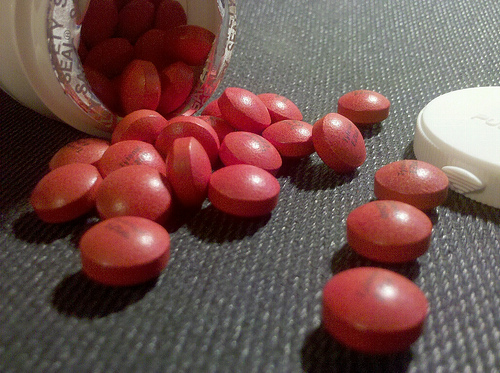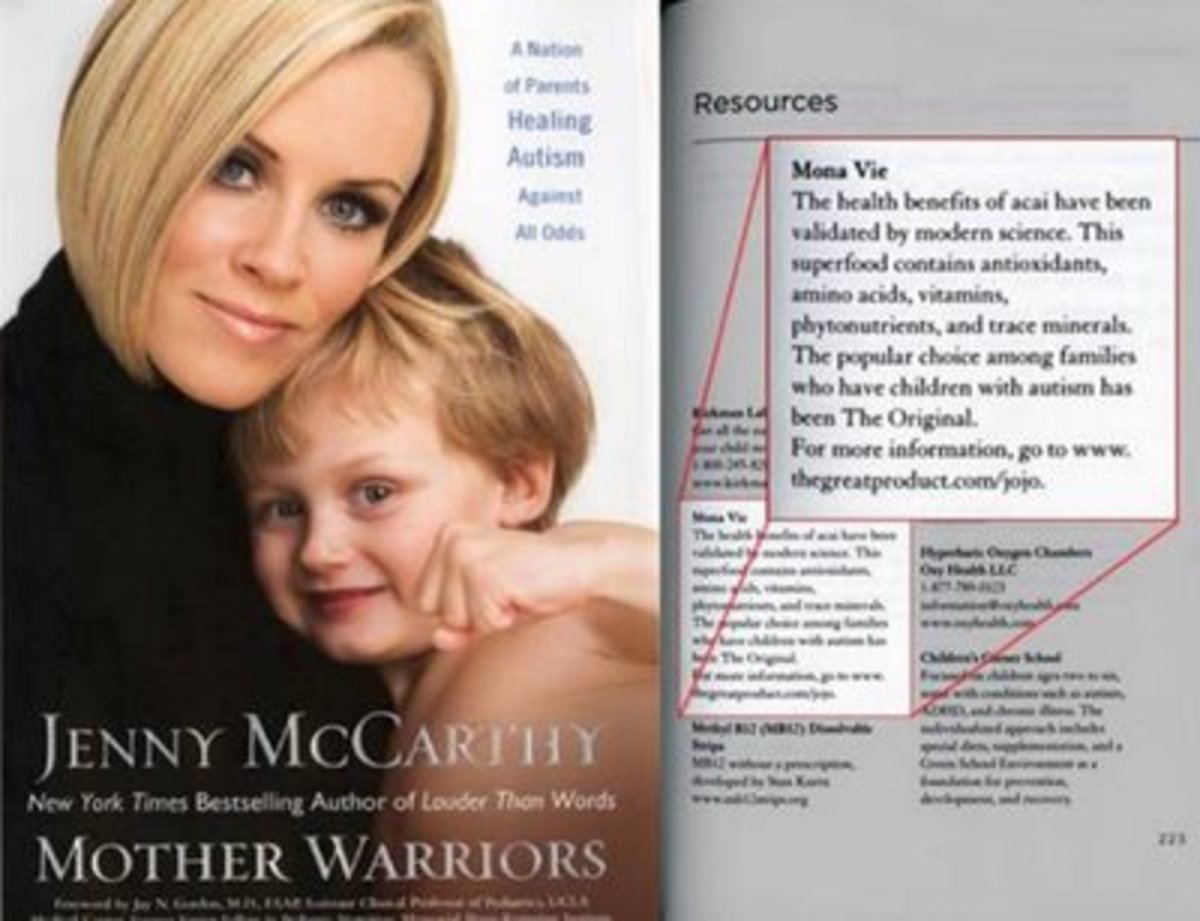The Causes of Autism- An Unfinished Story of Mystery, Rumor, and Falsified Data

Autism is a neurodevelopmental condition with its neurological origins and effects on a variety of developmental abilities. It belongs to a family of disorders known as the Autism Spectrum Disorders (ASD) which includes classic Autism, Asperger’s Syndrome, and Pervasive Developmental Disorder (PDD) also referred to as atypical Autism. Autism is characterized by problems with language, developmental, and social skills. It can occur as early as a few months of life and as late as three years in a child, the latter labeled as the regressive form since the child has developed skills in those areas and reverts from them. Currently no direct cause has been identified for autism. Genetics are believed to play a role, since family history and presence of the disorder in siblings add to the chances of a child having it. Language, developmental, and social skills encompass a large variety of behaviors, traits, and reactions. These skills require the use of many different parts of the brain. Studies have shown inflammation, autoimmunity, and decreased blood flow to the brain, among others, to be present in autistic individuals. Many researchers focused on exploring autism to define the causes, as it is clear there are different factors contributing to this syndrome. The research looking to find the causes often end up disproving things once suspected to cause it.

Suspected Causes of Autism
1. Mercury Poisoning
2. Childhood Vaccines
3. Acetaminophen
Autism.com points out the rates before the early 90s were 5 in 10,000 children diagnosed with this disorder whereas after the early 90s the statistics show as about 60 in 10,000. Other researchers note the surge in cases started even earlier in the 1980s. One thing that often comes to my mind when looking at seemingly increased rates of a given disease or, in this case, disorder is whether the incident of the disorder itself is increasing or is the diagnosis of it increasing. For many conditions the technology to detect and diagnose, along with the advancement in research, and increased general knowledge of a condition all can contribute to diagnosis. Particularly with autism and ADHD, it is probable there were many cases of these conditions in the past left undiagnosed. This would skew the above data which at first glance seems as though the incident of the disorder is increasing when in fact the diagnosis of cases is increasing. PubMed Health’s webpage on Autism supports this idea. This page also goes on to point out some of the suspected but not proven causes of this disorder- including mercury poisoning and vaccine sensitivity. It is important to note these two suspected causes are separate- even though mercury poisoning may be linked to vaccines. First let’s look into mercury poisoning.
Mercury poisoning can have negative impacts on the brain, liver, kidneys and heart as well as the immune system. It can be particular damaging to successful development in infants. This type of poisoning in humans is found to be caused by methylmercury, the environmental form of mercury. Thimerosal is a mercury based preservative used in many multidose vaccinations. It is added to prevent the growth of bacteria and fungi, an important characteristic when a vial is intended for repeated use. When in the body, thimerosal is broken down to ethylmercury and thiosalicylate. Both metabolites are easily eliminated by the body, leading researchers to believe they do not accumulate in people to cause potentially negative effects. Methylmercury, on the other hand, has been found to stay in the body longer and cause harm. Despite being touted as safe thimerosal was removed, as a precaution, from any childhood vaccines in 2001. If total removal was not possible, it was reduced to trace amounts only. Studies done since the removal have proven it is not linked to autism. These studies tracked the levels of ethylmercury in vaccinated children with and without autism. The report did not find a link between thimerosal vaccinations and increased risk of ASDs. On a side note thimerosal continues to be in some but not all variations of the flu vaccine. The flu vaccine is not strictly a childhood vaccine, although it is certainly recommended for children.
The idea of vaccine sensitivity, as I mentioned above, is a separate topic from mercury poisoning. The main culprit for suspicion is the MMR vaccine-the combined vaccination for Measles, Mumps, and Rubella. The MMR vaccine never contained thimerosal; it is a single dose vaccination. Which begs the question, why is it notoriously linked with autism? For starters the first dose of the MMR vaccine is given between 12-15 months of age in children. (It is followed by a second dose typically given when the child is 4 to 6 years old, although it can be given as early as a monthafter the first dose.) This is within the appearance time of the regressive form. The concurrency of these two events, administering the MMR vaccination and onset of regressive autism, has been noted by parents and has started the foundation for a link between the two. Additionally the measles, mumps, and rubella vaccines were individually developed, in the late 60s through the late 70s, and used as separate vaccines. The three were put together as a combined vaccine approved for use in the 70s. The 1980s are considered by many researchers to be the beginning of the increase in regressive forms of autism in the US. The widespread use of the triple vaccine and this surge in cases of autism can be mapped to a similar time, adding weight to this theory. The major blow to the MMR vaccine’s reputation came in 1998 when Andrew Wakefield et al. published a paper in the medical journal The Lancet falsely implicating MMR vaccinations leading to autism. Twelve years later, The Lancet fully retracted the study and its findings but the damage to the MMR vaccine’s reputation was already done.

But the MMR story does not end here, in my research for this article I came across an interesting theory linking the use of acetaminophen to autism. On the surface this excludes MMR from the equation but the author of this review, Peter Good, goes on to point out the acetaminophen is given as a fever and/or pain reliever where the cause of these symptoms is often the administration of the MMR vaccine. This may be the reason MMR vaccination is viewed, in the parent’s minds, as the caustic factor when they report the regression form starts shortly after the vaccination. The author points out the vaccination process often leads to fever and pain, in which case parents would give their children pain reliever. Acetaminophen, specifically the name brand Tylenol, has had an interesting history which enables correlations to autism to be tracked. For example the CDC (Center for Disease Control and Prevention) issued a, later unfounded, warning linking aspirin to Reye’s syndrome in the early 80s. At this time there was a proven decrease in sales of children’s aspirin and an increase in sales of children’s acetaminophen most likely a result of this warning. Parents took heed of the CDC’s warning and began giving their children acetaminophen instead of aspirin. This switch-over tracks similarly with the increased incident of the regression form of autism in children. Good goes onto explain the pathway in the body affected by the acetaminophen is detoxification via sulfation. Sulfate and Glutathione allow for detoxification of various compounds in the body. Sulfate is needed to break down acetaminophen, when there is a lack of sulfate the acetaminophen has the chance to break down to a toxic metabolite which then requires glutathione to break it down. Using up sulfate or glutathione or both to continually break down acetaminophen prevents these compounds from acting on other substances which are harmful to the body. Does giving small children Tylenol open the door for harmful toxins to avoid being broken down and eliminated from the body? Can these harmful toxins lead to autism in children? This article reviews the main research done looking into the acetaminophen-autism link. It is definitely worth reading for a more comprehensive summary on the studies (Source 3).
These examples portray an intriguing story for varied reasons. There is widespread rumor and falsified data dictating the public’s perception of autism causes, mercury poisoning, and use of childhood vaccines. Ethylmercury has never been positively found to cause toxicity in the human body, yet the rumor was enough to raise parent’s concern about vaccinating their children. MMR has never been positively linked to autism yet cases of measles and mumps have seen increases due to the bad reputation MMR has received. The story of autism is also the reminder that scientific data is not to be taken as cold hard facts. The MMR-autism paper was published in a reputable journal and by the time the court cases were over and the article was retracted the public’s opinion was already tainted. In less severe cases than the MMR-autism paper, data may be refuted. Often times after the release of a study criticism is drawn in a number of areas, for example study design, sample population, and/or data analysis methods, which weaken the findings. Autism is a syndrome where, in the brain alone, many different regions are in a state of dysfunction and the outward effects, while common to behavior, communication, and social traits, are varied in individual patients. The trouble with discovering the origins of a disorder of this nature is evident in this article- false leads, speculation not based in fact, and conflicting or outright unfounded data.
Sources/Additional Reading
1. http://www.cmaj.ca/content/182/4/E199.long
2. http://pediatrics.aappublications.org/content/early/2010/09/13/peds.2010-0309.full.pdf
3. http://www.altmedrev.com/publications/14/4/364.pdf
4.http://www.fda.gov/BiologicsBloodVaccines/SafetyAvailability/VaccineSafety/UCM096228
5. Rossignol DA, Hyperbaric oxygen therapy might improve certain pathophysiological findings in autism, Med Hypotheses (2006), doi:10.1016/j.mehy.2006.09.064








